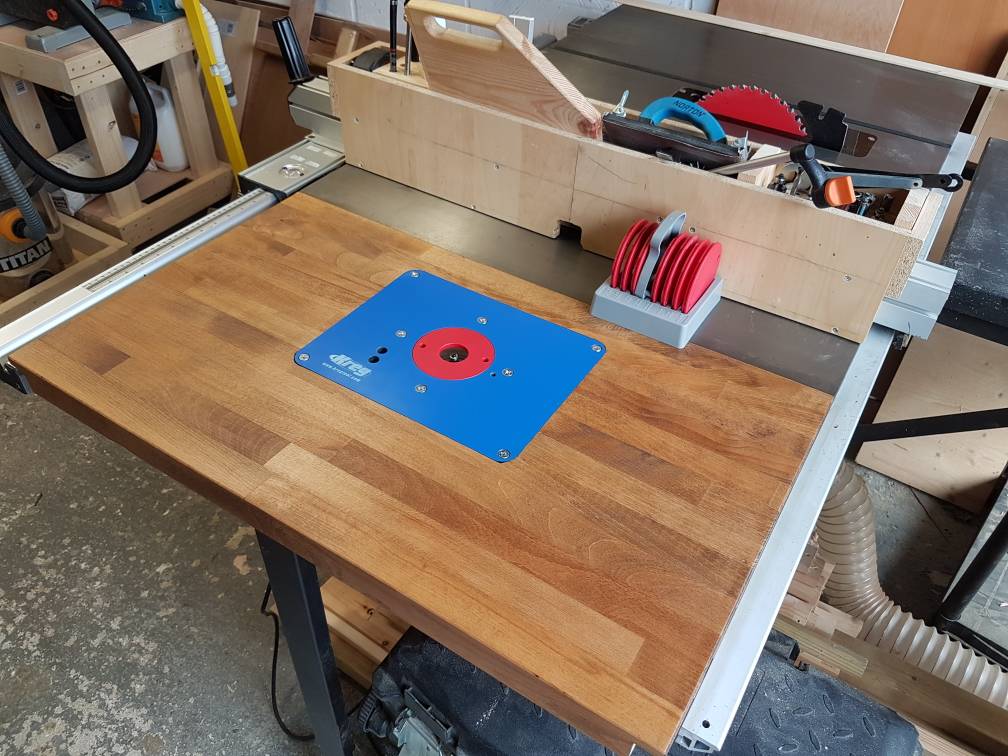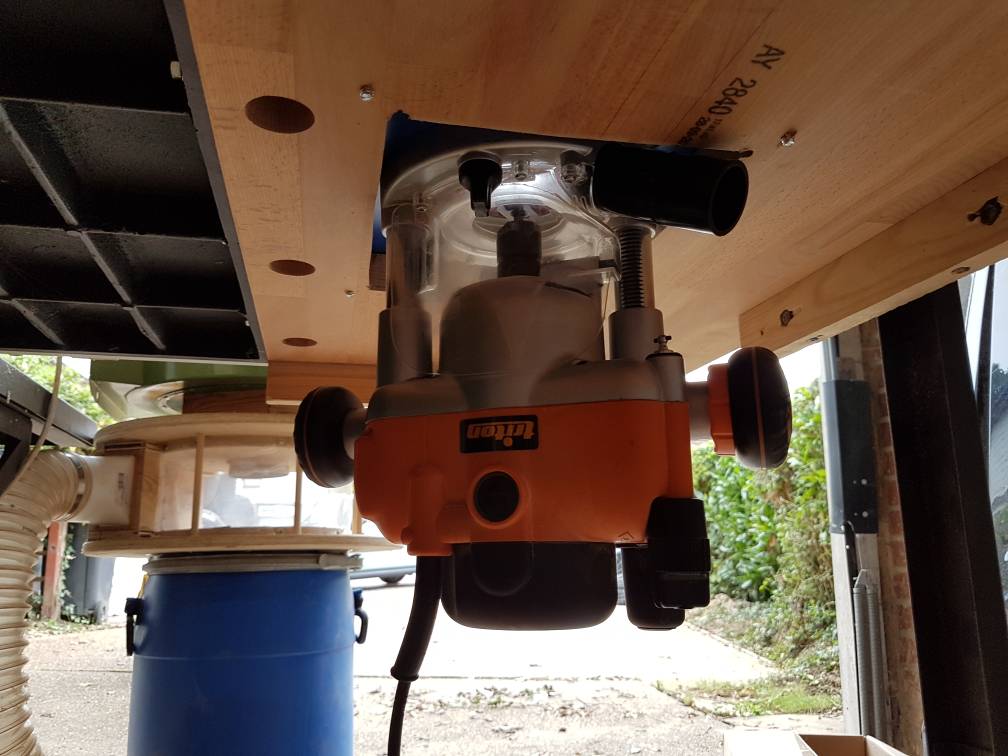I came back from one of Peter Sefton's open days recently with a piece of this:
https://woodworkersworkshop.co.uk/products/woodpeckers-track-super-track
I think it's brilliant... as a router fence.
I've cut mine (on the mitre saw!) so that I have a leftover piece for possibly a cross-cutting sled one day. I put a notch in it for the cutter, and the two different sets of slots (each side) mean I can mount it differently depending on what I'm doing, for example as a support for a tall fence.
Re-making the table top has been on the to-do list for yonks, when I do, I may well get another strip and let it in to the surface as the diagram, because having several slots available would be very good for things like featherboards.
Anyway, it's simple and jolly useful.
E.
PS: one tiny caveat -- it is intended for imperial sizes of machine screw (as shown holding it down in the picture). You can adapt coach bolts (dome-headed ones with a square bit at the top under the head), by grinding two flats on them, or simply make bigger metric machine screws narrower, or just use the intended imperial nuts and bolts. It was slightly annoying to notice this, but not a showstopper by any means. Just sayin'.
PPS: if anyone tells you that you need a split fence, so you can set infeed and outfeed planes at different distances from the axis of the cutter, just smile inwardly and walk away. Mine was a bought router table, and that "flexibility" has caused more wasted time and frustration than any other aspect of the design (which isn't very good). A one-pice straight, rigid and square fence (with a notch for the cutter), and with the abiltiy to clamp stuff to it easily, is the way to go. All other paths lead to madness...











